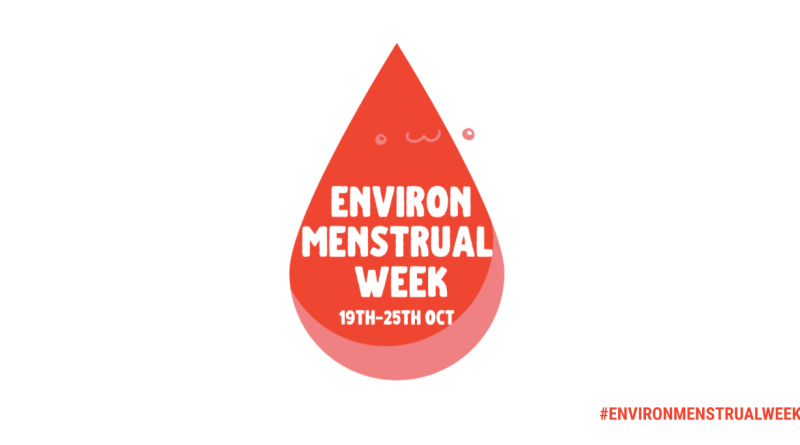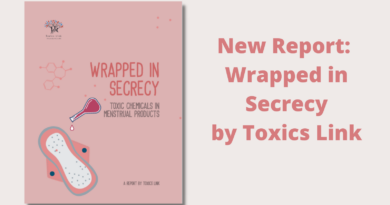HEJSupport Interview with Kate Elliott, President at Changing the Flow
Hailey Morton (HEJSupport) sat down with Kate Elliott, co-founder and President of Changing the Flow, to speak about her work with the organization. Changing the Flow was founded in Waterloo Region (Canada) in 2019 to advance menstrual equity.
*Note: This interview has been edited for clarity.
Hailey Morton: Please tell me a little bit about your organization.
Kate Elliott: Changing the Flow is a social enterprise dedicated to the achievement of menstrual equity. We do this through awareness, education, and implementation. We offer a range of services including educational workshops, promotional resources, and policy consultation.
HM: What inspired you to start this organization?
KE: The main thing that really got us going, is we were volunteering within the menstrual equity sphere. And that’s how we – myself and Kevin – met, and loved it, and obviously we’re both very passionate about it to volunteer in the first place. We basically realized that there needed to be a lot more education around it, and we learned that the hard way, I guess. We were kind of naive. I think if I had to pick one moment that sparked it, we put a motion forward with the City of Cambridge to provide access to free period products in city facilities. And it was just a whole thing – all motions were shut down, all the variations, and that was when we realized, “Oh, this isn’t as simple as we thought this would be.” That we [were] like “Look, you should do this because everyone deserves access to period products,” [and then] we [realized] “Oh, that was kind of naive.” People actually need a lot more education before we’re gonna fight for [this]. And that, I would say, for me anyway, is when I really realized there needed to be a certain entity that could be dedicated to this. And that’s when the idea for Changing the Flow came about.
HM: That’s amazing. And really disappointing to hear that that was such a struggle, but I guess there’s such a taboo around periods that it doesn’t get talked about a lot. So tying into my next question, personally, how would you define menstrual equity, or what does menstrual equity mean to you?
KE: So I have a three-tiered definition that I like to use depending on the audience. The most in-depth definition is “Menstrual equity is having equal access to period products, ways to manage menstruation, as well as education around reproductive health.” And I love that, because to me that encompasses everything that it needs to. You know, I think sometimes we’ve been asked “Why not period equity?” And I’m like, well the menstrual cycle isn’t just about that however-many-days of bleeding. It can include menopause, it can include PCOS that can affect your period. You might not actually bleed and you still are experiencing menstruation. So that’s a big part. And then it’s the access to period products, but it’s also the ways to manage it. For example, people who are experiencing homelessness might not have access to running water as easily, and so that is important to manage your period. And then education I think is the final necessary thing in that [definition]. You could have all the money in the world, all the period products of every different variety, and if you don’t understand your cycle and what’s going on with your body, then it’s kind of pointless. So that’s why I like that definition, because it encompasses everything.
HM: That’s great. I haven’t heard that before explicitly in terms of moving beyond that bleeding aspect to consider menstruation more holistically. So far, you’ve talked about the importance of education and the lack of comprehensive education regarding menstruation. But generally, what do you see as some of the barriers that prevent us from achieving menstrual equity here in Canada?
KE: Yeah, I think as I touched on there, even as a term, [menstrual equity is] quite unknown, which is understandable. You know, there [are] a lot of issues in the world – I’m not trying to claim that this should be at the front of everyone’s mind. But obviously we specialize, we pick our cause, you do your best to try and spread across these things. I think ‘period poverty’ as a term can be a lot better understood, the words are just easier to know. Like ‘poverty’ and ‘period’, you can kind of figure it out. Menstrual equity less so. I think firstly, at the foundational level, periods are just so stigmatized that people don’t talk about them. When they’re normal and healthy, you don’t talk about it, let alone if you can’t afford it, or you’re having problems with your period, [then] you don’t talk about it because of the stigma. And this term, ‘menstrual equity,’ is already so far removed, that then if you have got past that point of the stigma, you might just think that it’s an issue elsewhere in the world – where potentially there’s further barriers to accessing products and further stigma, [for example], in places where you’re not allowed into certain buildings when you’re menstruating. You know, it’s not to say that that stigma isn’t worse, but also, just because it’s not necessarily as bad in Canada doesn’t mean that it’s not still an issue. If anyone can’t access period products, then that’s a problem. Plan International Canada [has reported] the statistic [that nearly] 1 in 7 girls in Canada have missed school because of their period (and they say girls -that’s the statistic – but we operate in a gender-inclusive way). And that’s a problem. Just because it might be worse elsewhere, that doesn’t mean there doesn’t need to be work done here as well – and I think that might be where people find a barrier. There is important work being done around the world, but work still needs to be here as well.
HM: Definitely. So our website is primarily about sustainable menstruation. And reusable period products can often have higher upfront costs as opposed to disposable products, which can act as a barrier for people who menstruate who would like to make that transition to sustainable menstruation. As a result, there seems to be a dichotomy between sustainable menstruation and menstrual equity. So I was just wondering if you think they can co-exist, and if so, how do you think that sustainable menstruation and menstrual equity can be integrated in that movement?
KE: Speaking personally, I think menstruation and menstrual equity should be about being able to choose. Having a period and the way you manage your period can be quite intimate, especially if you’re using something that you insert inside you – that’s a very intimate choice, and you need to have the choice to do that, however you want to do it. Ideally that would be sustainable, and ideally you have the ability to have a sustainable option if you want it, but it doesn’t mean that it necessarily has to be. But I think what definitely needs to improve is, you could go to Shoppers or whatever, and maybe now they have the Diva Cup and Tampax cup, but there’s not typically any other [sustainable] option. And I think that’s missing from the average shopping experience. Maybe you don’t, for example, like one brand of menstrual cup; maybe you’ll like another, there isn’t just one. I think, obviously, the cost is difficult – a lot of people don’t have that money upfront. It’s fantastic to see companies trying to spread the accessibility of a sustainable period. For example, DivaCup has the Diva Cares program where they donate cups to try and help make a sustainable period an option for folks who might not necessarily be able to afford the cost upfront. I think that this is a fantastic way of removing barriers to a sustainable period. And I’m sure a lot of other sustainable brands have similar operations.
I think personally, what really [helped] me go toward a completely sustainable period is people actually talking about their experiences. Because there are actually so many products. Like the cups or the pads or the reusable tampon applicators – there are so many things that you don’t necessarily know about, and people need to talk about them, to talk about their experiences. And I think that’s another way that the stigma can get in the way. But that is definitely changing… and that’s a big thing.
[So] in the simple terms of your question, yes they can co-exist.
HM: Moving into my last question: How can people in the Kitchener-Waterloo-Cambridge area support your work and get involved in your organization?
KE: So all our social media [accounts] are @changingtheflow, which is a great way to follow along. And we’ve recently started sharing people’s period stories, which I love doing. Obviously it’s a great way for people to engage, and [to] realize that these experiences that maybe they were so ashamed of, are actually quite normal. So that would be a great way to get involved. But we also welcome volunteers. We have a few volunteer positions, and the community support is amazing. And obviously any collaborations. Honestly we’re open to like anything if people just get in touch.
[HM]: That’s great to hear! Thank you so much for taking the time to speak with us today.



